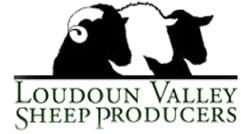Healthcare
Parasite Management Webinars
Weekly Worm Webinar #1 – Periparturient Egg Rise, Susan Schoenian, Runtime: 1: 12: 40, https://youtu.be/IimCsrayBpQ Weekly Worm Webinar #2 – Fecal Egg Counting Primer, Dr. Dahlia O’Brien, Runtime: 51:01, https://youtu.be/EZK9ptRnzo0 Weekly Worm Webinar #3 – Public Enemy # 1: The Barber Pole Worm, Dr. Kwame Matthews, Runtime: 1:48:55, https://youtu.be/M9Iprr7v8Jw Weekly Worm Webinar #4 – Pasture…
Read MoreFecal Egg Counts-Instructional Videos
https://www.youtube.com/watch?v=EZK9ptRnzo0&feature=youtu.be https://www.youtube.com/watch?v=ZZQymZKe_hs
Read MoreObstetrics & Lambing Problems
Clell V. Bagley, DVM, Extension Veterinarian Utah State University, Logan UT 84322-5600 July 1997 AH/Sheep/12 Lambing season is a busy time and a critical step toward a productive year. The first rule is for frequent observation of ewes due to lamb. Extra help during this season will usually more than pay for the cost because…
Read MoreCopper Toxicity in Sheep
by Larry L. Berger, Ph.D.Professor, Animal SciencesUniversity of Illinois Importance of Copper Copper toxicity in sheep is more often a problem of nutritional management than it is excess copper intake. The purpose of this paper is to look at such factors as nutrient interactions, animal management, and environmental conditions that may increase the risk of…
Read MoreDiarrhea
Diarrhea is condition where the feces (manure) is more fluid or watery than normal. It can be caused by bacteria, parasites or diet. The following are the various situations you can experience when lambs have diarrhea. 1. Lamb is eating normally and appears to be okay except that it has diarrhea. Your lamb probably has…
Read MoreCough
Coughing can be caused by dusty pens, dusty feed, or infectious agents. If the lamb only coughs at feeding time, dusty feed is the problem. You can dampen the feed by adding a tiny bit of water or molasses. If the lamb only coughs after running and jumping, the dust in the pen is probably…
Read MoreBoils
CORYNEBACTERIUM PSEUDOTUBERCULOSIS – Boils – this disease is caused by bacterium CORYNEBACTERIUM PSEUDOTUBERCULOSIS. OCCURRENCE – CL occurs in sheep across the U.S. The infective bacteria reside in the environment and on the skin of sheep. Wounds caused by shearing, thorns, splinters, grass awns, etc. are invaded by the bacteria which then find their way to regional…
Read MoreAcidosis
Acidosis is a condition caused by the over feeding of grain. The bacteria in the rumen make acid from the carbohydrates in the grain. If too much acid is formed, it is absorbed into the blood stream and causes the whole body to become acidic. This can be a life-threatening situation. Severe acidosis may resemble…
Read MoreTubing a Lamb
TUBE A LAMB, SAVE A LIFE Clell V. Bagley, DVM, Extension VeterinarianUtah State University, Logan UT 84322-5600July 1997 AH/Sheep/09 Sheep producers can have a major impact on lamb survival by using a stomach tube and a large syringe. When a lamb is born weak or under stress and just doesn’t nurse well immediately, just do the following:…
Read MoreA Timeline for the Ewe & Her Lambs
The EweDAYS 0–7 > Greatest risk of embryo loss due to heat and humidity stress DAYS 30–90 > Critical period for placental and mammary gland development. Reduced fetal growth, birth weights, vigor, and lower milk production result from poor nutrition at this time. Macro- and micro-mineral supplementation is vital. Impairment cannot be made up for…
Read More